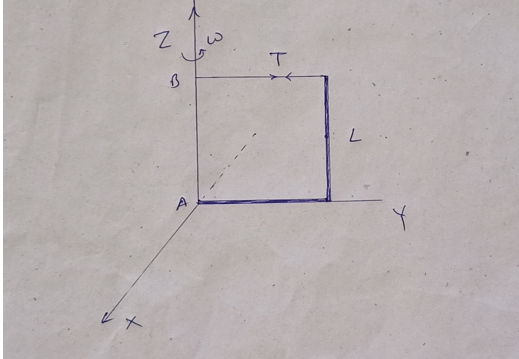2. An L-bracket is composed of two identical thin sticks each with mass M and length L. The bracket rotates about the vertical at constant angular speed co and is supported by a bearing at the bottom, point A, as well as by a massless cord at the top of the bracket. The cord is parallel to the xy-plane and rotates with the bracket. Determine the tension in the cord.
Angular speed, acceleration and displacement
Angular acceleration is defined as the rate of change in angular velocity with respect to time. It has both magnitude and direction. So, it is a vector quantity.
Angular Position
Before diving into angular position, one should understand the basics of position and its importance along with usage in day-to-day life. When one talks of position, it’s always relative with respect to some other object. For example, position of earth with respect to sun, position of school with respect to house, etc. Angular position is the rotational analogue of linear position.


Let ω denote the angular speed, T denote the string's tension, M denote the mass of each rod, L denote the length of each rod.

Step by step
Solved in 2 steps with 2 images









